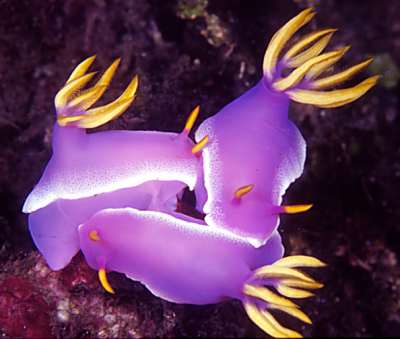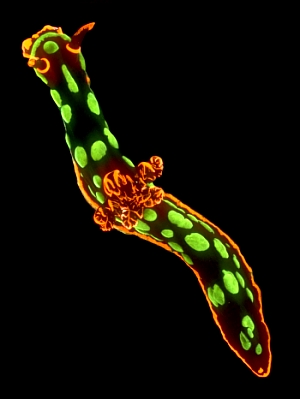 Cuttlefish have some of the most incredible camouflage of anything in the animal kingdom. Their highly complex brain allows them to control the cells in their skin to blend in perfectly with their surroundings, or flash colorful displays much like an LED billboard.
Cuttlefish have some of the most incredible camouflage of anything in the animal kingdom. Their highly complex brain allows them to control the cells in their skin to blend in perfectly with their surroundings, or flash colorful displays much like an LED billboard.The cells on the skin of a cuttlefish are covered in tiny dots of all colors, much like the tiny dots that make up the screen of your computer. A cuttlefish can make their cells grow or shrink to bring out the perfect blend of colors to match whatever is around it.
Its skin can also change shape from its usual smooth texture to whatever matches its surroundings. When it combines its color and texture adaptation, a cuttlefish can become nearly invisible even in plain sight. Because it can change its camouflage almost instantly, cuttlefish are very good at stalking prey, or avoiding becoming a meal themselves.

 Cuttlefish are not actually fish as their name implies. They are mollusks, close relatives of octopus and squid. Unlike their boneless cousins, cuttlefish have an internal shell which acts a skeleton to help them hold their shape. Cuttlefish shells are often sold at pet stores as calcium supplements for birds.
Cuttlefish are not actually fish as their name implies. They are mollusks, close relatives of octopus and squid. Unlike their boneless cousins, cuttlefish have an internal shell which acts a skeleton to help them hold their shape. Cuttlefish shells are often sold at pet stores as calcium supplements for birds. Cuttlefish use their skin for more than just camouflage. They can also use their amazing control of color to communicate. They often change to bright colors when they are angry to warn other sea creatures or other cuttlefish to stay away. They also use their arms to communicate, holding them in certain positions as if they are using sign language.
Cuttlefish use their skin for more than just camouflage. They can also use their amazing control of color to communicate. They often change to bright colors when they are angry to warn other sea creatures or other cuttlefish to stay away. They also use their arms to communicate, holding them in certain positions as if they are using sign language. I once found a cuttlefish while I was snorkeling in Cozumel. Unlike most marine life, it seemed genuinely curious about me. I swam in close and moved my fingers into the position it had its tentacles in. It waved its arms back and flashed bright colors at me as if it was trying to carry on a conversation. After a few minutes, the cuttlefish darted away and disappeared. I still wonder if I said something mean or just wasn't much fun to talk to.
I once found a cuttlefish while I was snorkeling in Cozumel. Unlike most marine life, it seemed genuinely curious about me. I swam in close and moved my fingers into the position it had its tentacles in. It waved its arms back and flashed bright colors at me as if it was trying to carry on a conversation. After a few minutes, the cuttlefish darted away and disappeared. I still wonder if I said something mean or just wasn't much fun to talk to.






























